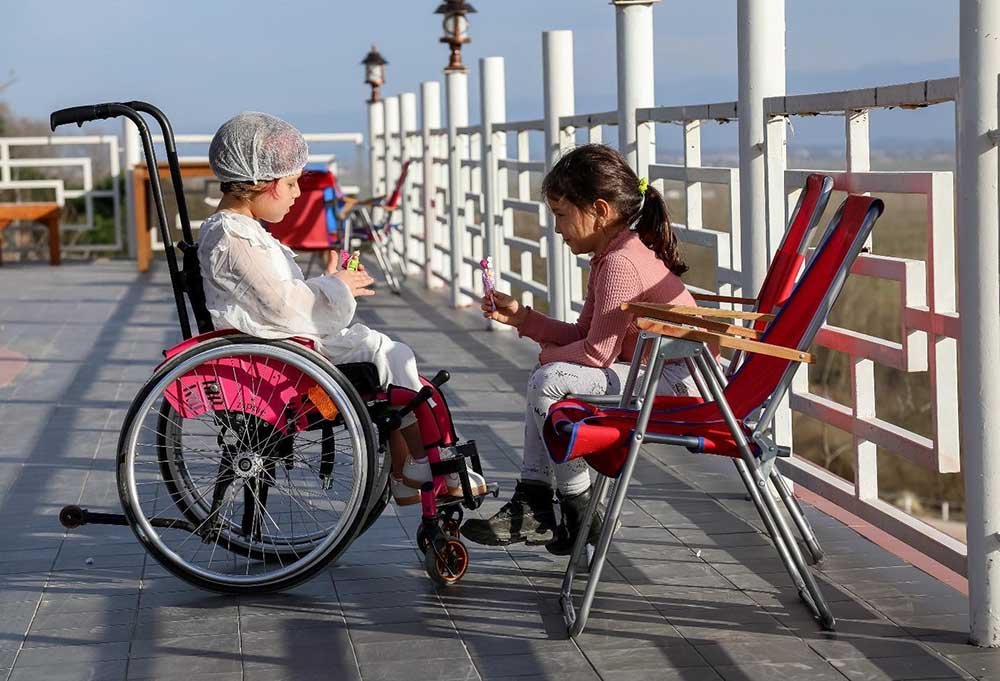Cerebral Palsy is a group of neurological disorders that results in motor and movement disability from a very young age. Caused by brain damage, cerebral palsy may result in movement and walking disabilities, cognitive impairments, speech difficulties, hearing or vision loss, joint problems, epilepsy, and learning disabilities.
The word “cerebral” refers to the cerebrum of the brain that manages the brain’s motor function. “Palsy,” on the other hand, refers to the paralysis of movement in various body parts.
The symptom of CP varies from patient to patient, and the condition can change over time. It is imperative to be on the lookout for these symptoms to detect early signs of CP in young children and help those already diagnosed with it.
This blog discusses the condition in detail, so let’s take a look.
What causes Cerebral Palsy?
Brain damage or abnormal development of the brain is the main cause of cerebral palsy. There are a number of factors that can contribute to it.
- Genetic conditions
- Maternal infections
- Prenatal exposure to toxins like alcohol and drugs
- Ineffective blood flow during pregnancy, causing issues with the development of the brain
- Lack of oxygen during delivery
- Severe illness during the baby’s first year of being born
Negligence during delivery and incompetent medical practices by the doctor can also result in cerebral palsy. Many cerebral palsy attorneys work actively with parents to take strict action on medical malpractice and hold the medical team accountable.
For instance, failure to perform a Cesarean section in time when required or the inability to track distress during labor are examples of malpractices that can result in birth complications. Improper delivery tools, such as forceps and vacuum extractors, can also result in potential issues with the baby’s health. Therefore, choosing professional healthcare practitioners during pregnancy and delivery is important.
Types of Cerebral Palsy
There are four main types of Cerebral Palsy.
Spastic Cerebral Palsy
This is one of the most common types; about 75% of people are diagnosed with this type. Individuals with this type of CP have increasingly stiff muscles, which makes the movements in their body very difficult.
Spastic CP can be further categorized as follows:
- Spastic Diplegia, which causes muscle stiffness in the legs, making it difficult for the patients to walk.
- Spastic hemiplegia that affects the movement of the arm
- Spastic quadriplegia results in damage to all four limbs, as well as the face, causing difficulties with movement, hearing, speech, and vision.
Ataxic Cerebral Palsy
Patients with Ataxic Cerebral Palsy face difficulties with coordination and balance. This type of CP is caused by damage to the brain’s cerebellum, which controls coordination in the body. Some of the common symptoms of ataxic CP include floppiness in the limbs, issues with posture, and a stiff body.
Dyskinetic Cerebral Palsy
Dyskinetic Cerebral Palsy is known for affecting a child’s ability to sit, walk, and crawl. It is caused due to low muscle tone in the body, eventually resulting in floppy muscles. It can also affect the tongue and facial muscles, making it problematic for the child to talk and swallow.
Mixed Cerebral Palsy
When patients deal with symptoms of more than one type of CP, they are diagnosed with mixed cerebral palsy. This type of CP occurs when the damage is caused in multiple parts of the brain. This is why treatment of mixed CP can be a bit more challenging than the other types.
Symptoms of Cerebral Palsy
Parents need to be on the lookout for any unusual symptoms in newborns so any potential medical condition can be diagnosed at an early stage. Early intervention is imperative in dealing with any sort of disorder.
Although cerebral palsy symptoms can vary from child to child, here are some common symptoms you should look out for.
- Lack of coordination and balance
- Problems with swallowing
- Stiff muscles
- Floppy muscle tone
- Drooling
- Contractures
- Involuntary tremors
- Behavioral problems
- Delayed development of motor skills
- Difficulty with language and speech
- Visual and hearing impairments
- Sensory issues
- Intellectual disabilities
These symptoms may not worsen over time since the brain disorder causing cerebral palsy doesn’t change. However, as the child ages, some of these symptoms may become more or less apparent.
Diagnosis of Cerebral Palsy
Cerebral Palsy is diagnosed at a very young age, usually during the first or second year after birth. However, if the symptoms are mild, it is difficult for the doctors to make the diagnosis until the child is a few years older.
The diagnosis usually includes imaging tests such as:
- Cranial ultrasounds
- Electroencephalograms
- Computed tomography scans
- Magnetic resonance imaging scans
A CP specialist can help monitor the symptoms in the child and diagnose the condition. The parents need to take early notice of the symptoms and contact the healthcare practitioner as soon as possible.
Is it possible to prevent Cerebral Palsy?
Unfortunately, there is no proper treatment to prevent CP completely. However, there are a few ways parents can lower the overall risk of CP. Mothers should ensure they eat well and follow a healthy lifestyle during pregnancy to avoid any potential medical problems. Regularly getting screened for any potential complications is imperative.
Mothers are recommended to avoid alcohol, drugs, and tobacco, which can increase the risk of disorders like CP. Getting vaccinated against diseases like rubella, even before getting pregnant, can further reduce the likelihood of such disorders.
Moreover, parents should work with professional healthcare practitioners known for proper medical practices to avoid any complications during pregnancy.
In Conclusion
As a parent, you may feel unprepared and emotionally overwhelmed if your child is diagnosed with cerebral palsy. However, early detection of CP can help monitor the condition. There are many options available to educate yourself on the condition and get help with the treatment costs.
Although there is no cure for CP, being patient with the child and getting the right medical support can help manage the disorder and help your child lead a fulfilling life.
















